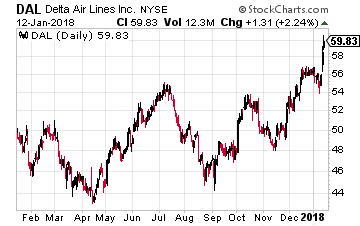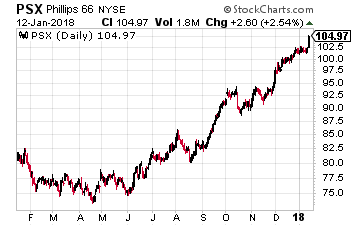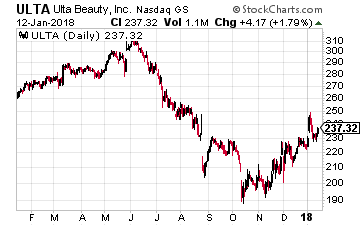Why go to Vegas?
I don’t gamble.
And I’m not into seeing past-their-prime performers like Celine Dion or the Righteous Brothers command the stage.
For me, there’s only one reason…
To get a peek at some of the amazing technology on display at the Consumer Electronics Show (CES).
The massive exhibition attracted 1,200 exhibitors and 185,000 visitors. Adam and I went there last week as guests of Indiegogo and its co-founder Slava Rubin and CEO David Mandelbrot.
The company had one of the bigger booths among the 800 companies at the Eureka Park venue in the Sands Expo halls. Eureka Park, by the way, is reserved for startups only.
Over a sumptuous dinner one evening, Slava told us that an increasing number of visitors to the Indiegogo site are interested in buying equity stakes in companies. Until recently, Indiegogo offered only perks and rewards.
It’s always a positive to welcome aboard a company of Indiegogo’s stature and success. Indiegogo is a true crowdfunding pioneer. Over the past 10 years, it has raised $1.3 billion for 800,000 entrepreneurs.
So why is the company reaching out to us?
Because Indiegogo sees a similar opportunity in equity crowdfunding. The fact that it’s partnered with MicroVentures, a highly regarded equity funding portal and one of our favorites, will make it even easier for us to work with it to find high-quality startup deals.
Tooling around Eureka Park, I saw a number of impressive products. I suspect some of them will end up raising via Indiegogo/MicroVentures.
Below are the five that stood out the most to me. Keep in mind that while I found their technology fascinating, whether they evolve into successful businesses is another matter. As such, don’t construe what follows as investment recommendations.
Aris MD: The things you learn at CES! The co-founder of Aris, Chandra Devam, told me my kidney and lungs are different from yours in shape, location and pathology (or just plain wear and tear). Surgeons aren’t really sure where to cut. They have a general idea, but that’s it. Aris’s virtual reality /augmented reality technology takes a diagnostic image – an MRI, for example – and lets the surgeon practice in immersive reality before the surgery.

Aris MD’s Goggles
Source: Aris MD
I put on these goggles at its booth. And, with a little help, I extracted a person’s brain. What came into view was a 3-D image floating right in front of me. There was no tumor, but if there was, I would have been able to see its true shape, size and depth. Amazing.
Robomart: Imagine tapping a button on your phone and in five minutes, a vehicle packed with fresh food items stops in front of your house. No driver or human to be seen. No cash register to bother with. No money exchanged. You simply take what you want and you’re automatically debited. This will be the model competing with Uber Eats and Amazon’s Whole Foods hookup – not just an order, but a range of selections from the entire food store coming to you.

A Robomart delivery vehicle
Source: Business Insider
Hologruf: It’s 3-D, portable and easy to install. Hologruf’s hologram system projects signs and displays that float in midair.
Imagine you’re in an auto dealership and the car drives right up to your seat as a hologram. Hologruf wants to make that a reality. Seeing its holograms up close, I can attest to their outstanding quality.
BLOCKS: You’re familiar with building your own pizza or hamburger… but how about your watch?
It makes perfect sense. Smart watches can now do so many things, BLOCKS founder Omer El Fakir told me it makes no sense to manufacture a one-size-fits-all watch anymore. With BLOCKS, you start off with a core that has smartphone notifications, fitness tracking, Alexa personal assistant and other features…
And go from there.
You can add functions by buying individual modules. For some, that may mean a fingerprint sensor module. For others, an air quality monitor module. Or perhaps all you want is an extra battery module.
My favorite module? Probably the flash memory, which keeps your data safe and close by.
The core costs $259. The modules cost between $30 and $40 each. Would you buy one? I’m tempted.
Olli: Branded as the world’s first 3-D-printed car and first self-driving car to incorporate the artificial intelligence capabilities of IBM Watson, Olli is the brainchild of Local Motors. I took a tour while taking on the persona of a near-blind person. As I entered the vehicle, it told me where I could find a free seat, alerted me to my stop and gave me directions to my destination when I left the vehicle.

An Olli 3-D-printed car
Source: Local Motors
Olli has gone through several iterations and is still under development. The company has scheduled several deliveries for mid year, when the Olli team will be monitoring how it performs in different environments and use cases.
It wasn’t easy picking my top five. There were many others I also liked. Hopefully, down the road a bit, I’ll be seeing a couple of these companies on crowdfunding sites.
Technology is just part of the equation of what makes a startup successful in the long run. But developing exciting technologies that also address real needs gives these companies a leg up out of the gate.
It doesn’t get any easier. But having talked to dozens of founders at the show, I think they know that already.
Good investing,
Andy Gordon
Co-Founder, Early Investing
Source: Early Investing


 Take Delta Air Lines (NYSE: DAL), for example. Just last week it said that the tax cut will boost its earnings by about $800 million a year. That translates to about $1 per share in increased earnings for 2018. Delta management raised their earnings per share guidance for 2018 to a range of $6.35 to $6.70, up 20% to 30% from the year earlier level.
Take Delta Air Lines (NYSE: DAL), for example. Just last week it said that the tax cut will boost its earnings by about $800 million a year. That translates to about $1 per share in increased earnings for 2018. Delta management raised their earnings per share guidance for 2018 to a range of $6.35 to $6.70, up 20% to 30% from the year earlier level. And it’s not just the big oil firms to benefit. The oil refining segment should really get a major boost. The largest company in the segment, by market capitalization, Phillips 66 (NYSE: PSX), will receive a 16% boost to 2018 earnings according to an estimate from Piper Jaffray’s Simmons & Company energy investment bank unit.
And it’s not just the big oil firms to benefit. The oil refining segment should really get a major boost. The largest company in the segment, by market capitalization, Phillips 66 (NYSE: PSX), will receive a 16% boost to 2018 earnings according to an estimate from Piper Jaffray’s Simmons & Company energy investment bank unit. One of my favorites in the sector is Ulta Beauty (Nasdaq: ULTA), which operates 1,058 stores and generated $4.8 billion in revenues in 2016. It should get a double boost – not only from the tax cut itself, but from consumers with a little extra in their pocket spending on simple luxuries like makeup, lip gloss, etc. Perhaps that’s why the stock is already up over 6% year-to-date.
One of my favorites in the sector is Ulta Beauty (Nasdaq: ULTA), which operates 1,058 stores and generated $4.8 billion in revenues in 2016. It should get a double boost – not only from the tax cut itself, but from consumers with a little extra in their pocket spending on simple luxuries like makeup, lip gloss, etc. Perhaps that’s why the stock is already up over 6% year-to-date.